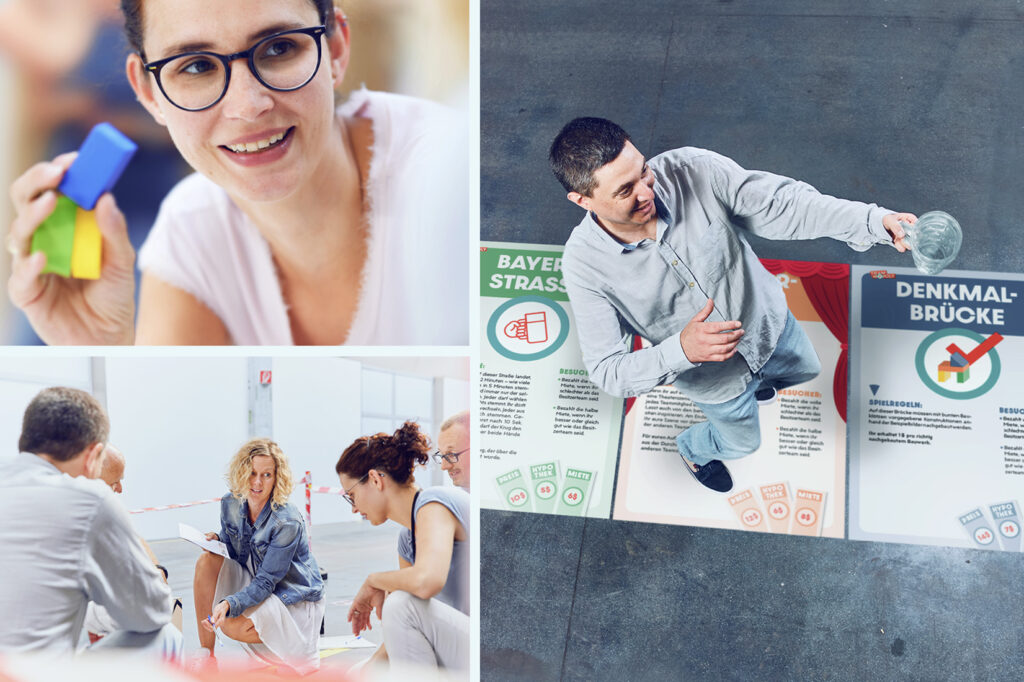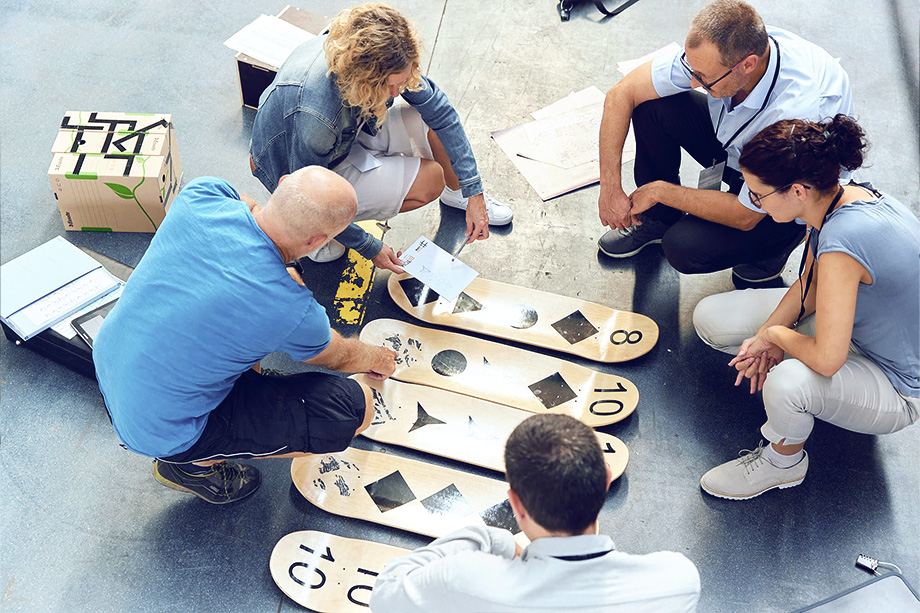The 8 best outdoor team building games
1. the whole egg
Duration: 60-90 minutes
Number of participants: Two or more people
Resources: one raw egg per team and various office supplies
Rules of the game: Participants are divided into teams of 3 to 5 people and each team receives a raw egg. Useful office materials for this game such as adhesive tape, pencils, straws, plastic objects, paper, newspapers and rubber bands are provided for everyone. The teams now have 15 to 30 minutes to wrap the egg with the office supplies provided so that it does not break when it hits the floor. After the time has elapsed, the egg is dropped from the second or third floor to check whether the “egg rescue system” works.
Objective: The teams learn to coordinate and achieve a great effect with limited resources. A classic teambuilding game.
2. plogging
Duration: 30-90 minutes
Number of participants: from two people to unlimited
Resources: bin bags, gloves, (grabbing tongs)
Description: Plogging originally meant doing something good while jogging and collecting garbage in nature. Determine an area in nature or the city with the teams and set a fixed duration. Which team has collected the most pieces of garbage (or the most weight) at the end?
Aim: To promote communication within the team and focus on the topic of responsibility
3. minefield
Duration: 10-30 minutes
Number of participants: 2 – 20 participants
Resources: various objects and blindfolds
Description: Objects are distributed in an open, traffic-free area. In this team-building game, the participants are blindfolded and have to cross the area from A to B without touching any of the objects. Each blindfolded participant has a sighted partner at their side who gives them verbal instructions. The blindfolded person is not allowed to speak.
Aim: To strengthen trust, communication and listening skills
4. scavenger hunt
Duration: min. 60 minutes
Number of participants: from 3
Resources: Paper, pens
Description: Divide the team building players into two or more teams. Create a list of fun tasks for each team to complete in the allotted time. Possible tasks are based on the teams having to move around a certain area to complete the tasks. Possible tasks could be: take a creative photo of your team at a bus stop, collect 5 business cards from hairdressers,… There are no limits to your imagination here. The team that completes the tasks fastest or the most tasks wins!
Aim: Getting to know each other, building networks (if the teams are mixed)
5. geocaching – treasure hunt
Duration: 60-180 minutes
Number of participants: from 3 people
Resources: GPS device or cell phone with corresponding app
Description: Search for a route in the vicinity on the Geocaching.com website, for example. Divide the group into teams and you are ready to go. Which team comes back first and has found the cache? Pay attention to the information on difficulty level and geocache type; multicaches are particularly interesting.
Aim: getting to know each other, cooperation
6. spider’s web
Duration: 60-80 minutes
Number of participants: 5 or more
Resources: Ropes, possibly small bells
In this outdoor team building game, two ropes are stretched between two trees (or poles). One rope is fastened as high as possible, the other close to the ground. This creates a large rectangle. Further ropes are then pulled criss-cross into this rectangle to create a spider’s web. The holes must be large enough for the team members to climb through without touching the “spider’s web”. Attach a bell to as many holes as there are team members. The whole team now stands on one side of the spider’s web. Now all team members must get through the spider’s web to the other side without touching the spider’s web. BUT only the marked holes may be used and each hole may only be used once.
Objective: To strengthen trust, cooperation and communication or recognize deficits
7. perfect square
Duration: 15-30 minutes
Number of participants: 5-25 people
Resources: long rope and blindfolds
One of the best-known and best team building games. The participants line up in a circle and hold a rope. Now ask all participants to place the rope on the floor and blindfold themselves. Now ask all participants to take 3 steps backwards and swap places with their left neighbor (you decide where the line starts). Now set the task of forming a square with the rope without removing the blindfold. It is best to set an additional time limit of e.g. 15 minutes to make the task more difficult. To make the game even more difficult, you can specify that all but two participants must remain silent
Aim: To promote leadership, trust and communication
8. Outdoor Open Air Cinema
Duration: 90-180 minutes
Number of participants: from 2 persons
Equipment: screen, projector, laptop, deckchairs
An outdoor team building activity to thank your team for a special achievement, for example. Invite your team to an open-air cinema evening and stream a current movie for your team. Provide chilled drinks and a snack and your movie night is guaranteed to be a complete success.
Goal: Recognition, team bonding, communication










